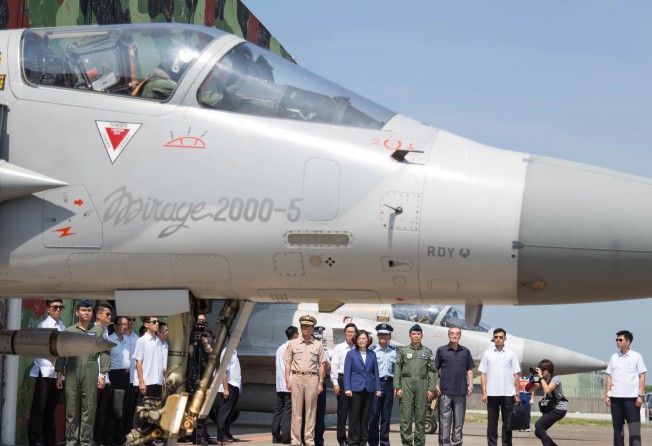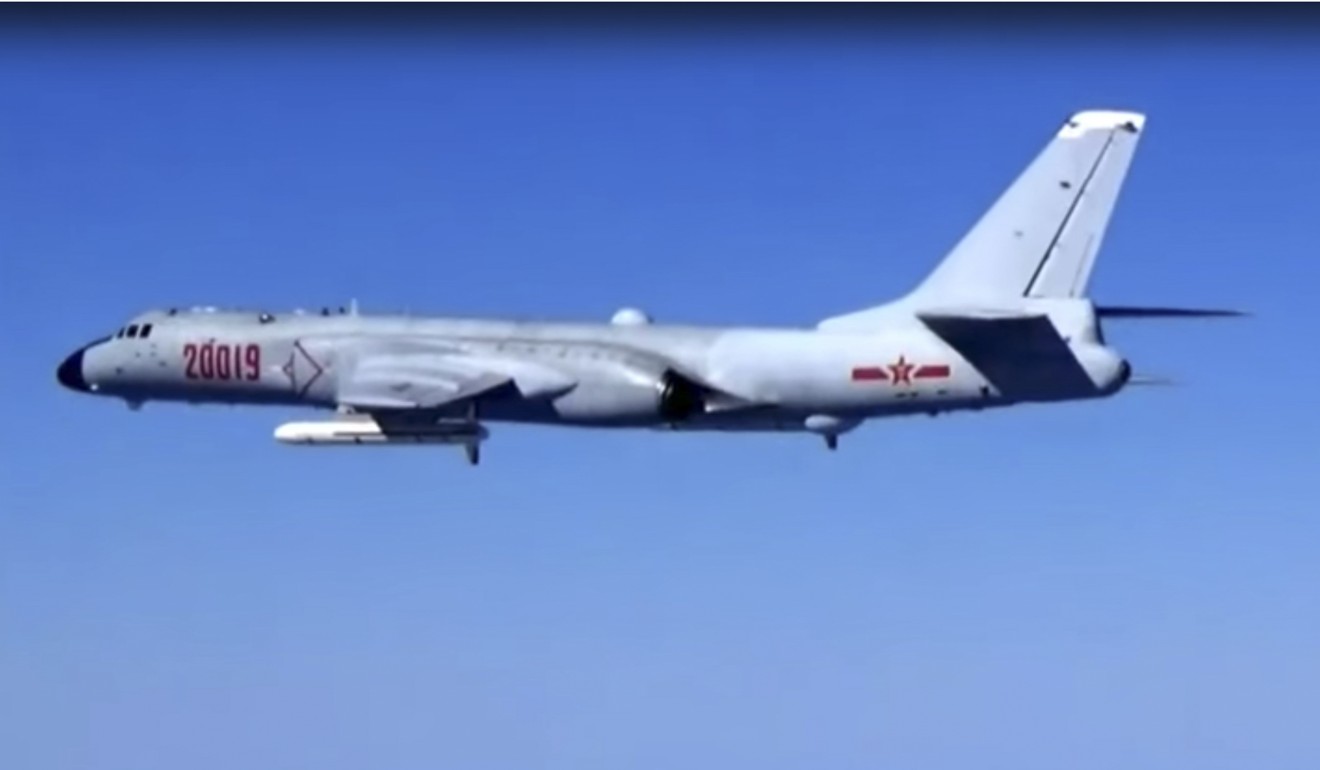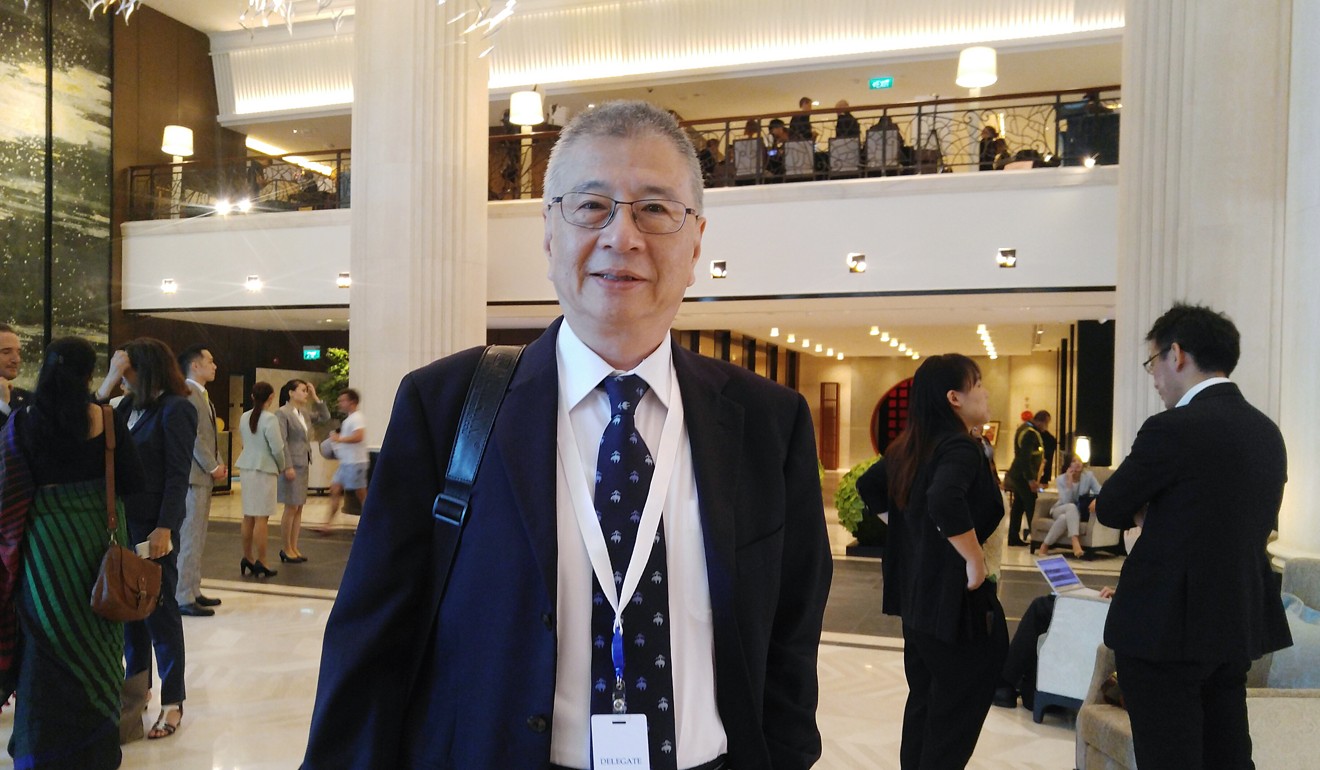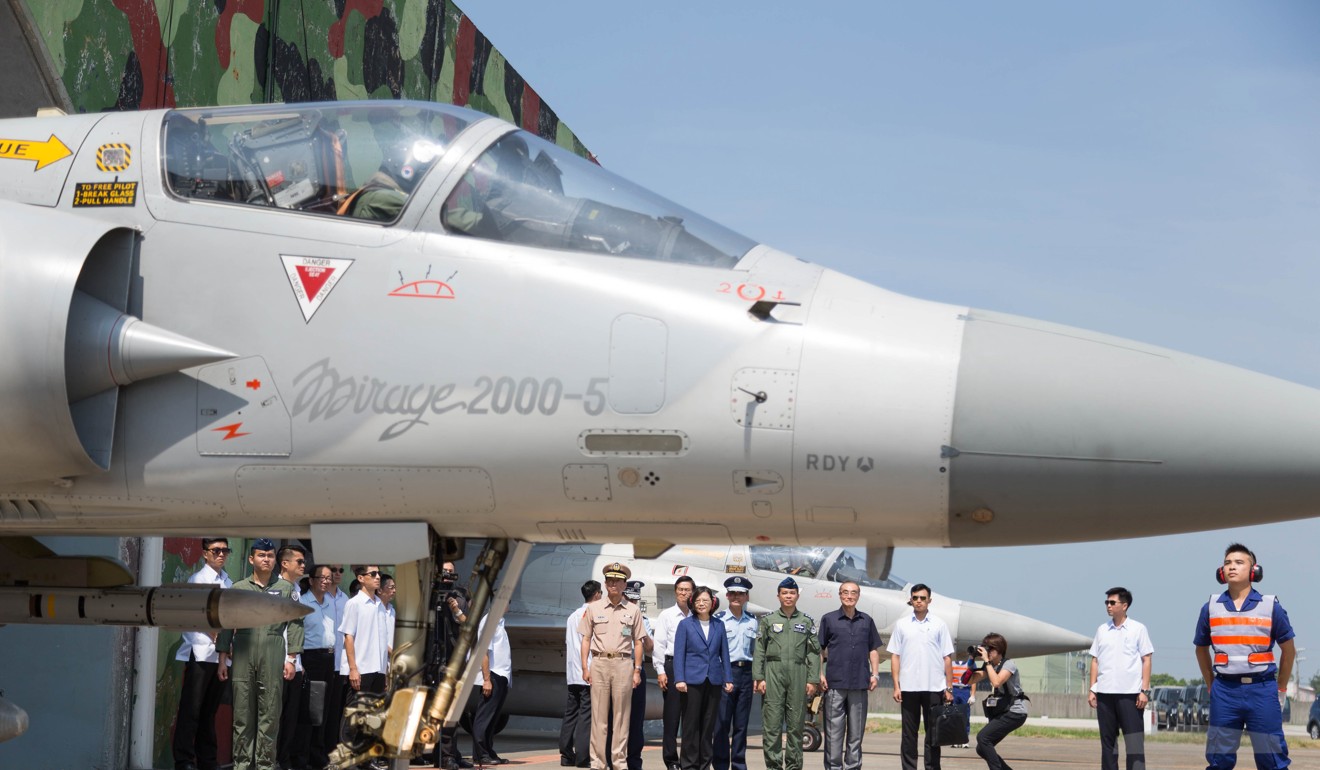Increased military drills suggest mainland China is preparing to strike against Taiwan, experts say
PLA releases footage of bomber, fighter jets flying close to self-ruled island, as Taipei says it spotted mainland ‘transport’ planes overhead

The recent increase in military exercises focused on Taiwan suggests mainland China is gearing up to take over the self-ruled island by force, a military expert said on Monday.
On Sunday, the People’s Liberation Army released a video of an H-6K bomber accompanied by two Su-30 fighter jets conducting “encirclement” patrols close to the island. The film’s publication came less than a week after the mainland’s air force released footage of a team of warplanes conducting similar exercises near to Taiwan.
“The recent ‘island encirclement’ patrols are very unusual,” Macau-based military observer Antony Wong Dong said. “The air force is conducting very practical and well-planned patrols near Taiwan to collect up-to-date military intelligence.”
While naval and air patrols in the region are nothing new, in the past they were mostly symbolic, Wang said.
“But now, the mainland is deploying old and new generations of surveillance planes, fighter jets and other aircraft … indicating the PLA is stepping up its preparations for war against Taiwan.”

Besides the patrols by the bomber and fighters, Taiwan’s defence ministry said on Monday that it spotted two PLA Yun-8 transport planes conducting long-haul flights near Taiwan between Sunday and Monday.
Despite being classed as transport planes, several Yun-8s in the mainland’s air force are equipped for intelligence gathering. In a more overt move, the PLA last month flew its largest reconnaissance aircraft, the Tu-154, close to Taiwan.
“The Tu-154, which is equipped with a synthetic-aperture radar, is able to survey and map Taiwan’s military bases, which will be very useful if Beijing launches a military strike against Taipei,” Wong said.
Ever since Chiang Kai-shek’s Nationalist troops fled to Taiwan in 1949, after losing the civil war to Mao Zedong’s Communist forces, Beijing has considered the self-ruling island to be a wayward province. As such, it has never renounced the use of force to bring it back under its control.
Moreover, the island has a huge strategic importance for mainland China as it lies in the middle of its route to the Pacific Ocean. It is therefore of little wonder that the Taiwan Strait has become the PLA’s primary exercise ground, another military expert said.
“Taiwan is the key obstacle for the PLA to reaching the Western Pacific because it’s part of the ‘first island chain’, which contains the [Chinese] mainland,” Beijing-based military commentator Zhou Chenming said.
The chain is a series of archipelagos lying between China and the world’s largest ocean that Beijing says has been used by the United States as a natural barrier to contain it since the cold war.

During the military exercises held on December 11, PLA aircraft flew through the Bashi Channel between Taiwan and the Philippines, and the Miyako Strait near the Japanese island of Okinawa. A spokesperson said the following day that the flights were proof of mainland China’s ability to break the first island chain.
While the scale and range of the PLA’s latest drills are undoubted evidence of its growing capabilities and confidence, Andrew Yang Nien-dzu, secretary general of the Chinese Council of Advanced Policy Studies in Taipei, said that the mainland’s air force still had some way to go before it could consider itself capable of engaging in “real battles”, as would be the case if it launched a strike against Taiwan.
“The intensive encirclement patrols show the PLA is on its way to becoming a combat-ready fighting force,” he said. “[But] Taiwan still has the air defence capability to counter any air strike from the mainland.”

Beijing-based naval expert Li Jie said that the increased focus on Taiwan had probably been triggered by the unstable political situation on the island. There had also been growing signals that both the United States and Japan would support the independence-leaning Democratic Progressive Party’s attempts at secession, he said.
“The PLA’s ultimate rivals are the US and Japan, with the US playing a key role behind the scenes on cross-strait issues,” Li said.
On December 11, the Taipei-based Central News Agency reported that Taiwan had asked Japan for its support as it seeks to join the Comprehensive Progressive Trans-Pacific Partnership – the regional trade agreement that succeeded the Trans-Pacific Partnership after the departure of the US.
“The mainland needs to update all of its military intelligence on Taiwan, including how many stealth fighter jets and strategic bombers it has, as well as any US and Japanese military deployments in the Western Pacific region,” Li said.
“Conducting intensive patrols around Taiwan is an essential part of the PLA’s preparations for any possible warlike operations in the future.”